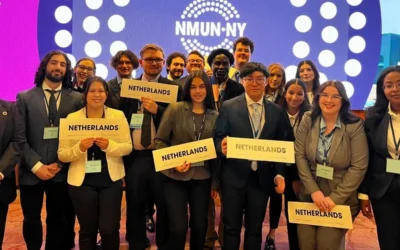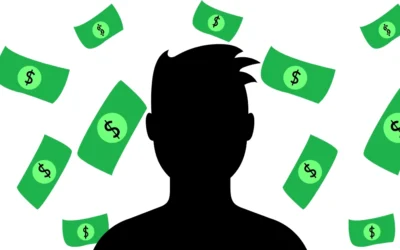For most of us, Jan. 1 is warmly embraced with champagne, glitter, and a long list of resolutions. Our boisterous New Year’s Eve celebrations are (usually) followed by a day spent in bed, eating fast food, and attempting to cure the hangover induced by our festivities.
New Year’s may seem arbitrary, or even ironic, especially for those of us who reject the idea of setting resolutions. But for many cultures around the world, New Year’s is the most important holiday of the year. It is celebrated with rituals and customs that have been bringing families together for centuries.
Western New Year’s falls on Jan. 1 of the Gregorian calendar. This calendar replaced the older Julian calendar when political and religious figures decided they wanted one that synchronized with Earth’s orbit around the sun, and one that also incorporated the Catholic Church’s Easter holiday.
Although most of the world has now adopted the Gregorian calendar, the lunar calendar is still used by several cultures for the spiritual holidays marked within them. This year, the lunar new year (celebrated by many East Asian cultures) will fall on Feb. 16. And although many of East Asian descent in Edmonton still celebrate the new year on Jan. 1, the lunar new year marks a significant time for individuals of different cultures to pay respect to their ancestors and build deeper connections to their heritages.
From little red envelopes to lantern festivals, the new lunar year is rung in with a variety of symbols and traditions that have by decades preceded the glitz and glam of Western New Year’s celebrations. Lunar New Year’s celebrations also last several weeks, rather than a single day. The lunar new year is otherwise known by many East Asian cultures as the “Spring Festival.” Its dates come after the winter solstice and usually fall closer to the vernal equinox, the beginning of longer, lighter days.
Lunar New Year’s, at its roots, aligns with the cycles of the moon and deeply correlates with the ancient agricultural practices of Cantonese people. In an article about Chinese New Year’s celebrations in Edmonton, Susan Jones illustrated the connection between agriculture and the lunar new year.
“In China, the celebration begins the spring season and marks the time in some of the warmer parts of the country for planting. It’s a time of renewal for members of Edmonton’s Chinese community,” explains Jones.
One of the more popular New Year’s events in Edmonton that embraces the city’s diverse culture is the annual Lunar New Year Extravaganza, hosted at West Edmonton Mall by the Edmonton Chinatown Multicultural Centre. According to the event’s website, it has been attended in previous years by around 25,000 people. This number is not a surprise, considering Edmonton’s locals come from a variety of different heritages.
For Edmonton’s Jewish community, however, the new year has already been celebrated. Rosh Hashanah, which translates to “the head of the year,” often takes place near the end of September. It is a time when candles are lit and prayers are made.
According to the website for Chabad Lubavitch of Edmonton, a religious centre that has been part of the city’s Jewish community since 1992, “the season of the high holidays is a time for an epic journey for the soul, and Rosh Hashanah is where it all begins.” The holiday is based on the Jewish lunar calendar, but its date often shifts in relation to the Gregorian calendar.
Though each culture within Edmonton and the world puts its own spin on the exact date and way in which the new year is celebrated, a significant concept that remains consistent for every New Year’s celebration is heightened attention to well-being.
Whether it be soul-searching, paying respect to ancestors or spiritual figures, or simply ridding ourselves of old habits, New Year’s is a time when we can come together to think about our lives with a reinvigorated mindset.
“I think happiness becomes a catalyst that motivates people to live out their resolutions and dreams in hopes of becoming a better version of themselves in the new year,” says Ameenah Assaf, who partakes in Eid, a religious celebration aligned with the Islamic lunar calendar.
Eid is composed of two important Muslim holidays. Eid al-Adha (“Feast of Sacrifice”) is commonly celebrated in late summer or early autumn. And Eid al-Fitr, which marks the end of Ramadan, is celebrated from mid- to late June or early July, depending on the lunar calendar.
For Assaf, New Year’s isn’t so much about tradition, but about the togetherness that the holiday brings. Both Canadian and Lebanese, Assaf is happy to embrace two cultures at once. Jan. 1 gives her a chance to spend time with friends and offers her a clean slate for setting goals for the year ahead. And Eid is traditionally a time when she cherishes family, prepares traditional dishes, and gets in touch with her own spirituality.
“In my culture, we have traditions that we celebrate, but I think it’s naïve in such a multicultural place like Canada not to (embrace different) traditional customs,” says Assaf.
The idea of celebrating New Year’s only once a year makes the most sense to those who have only ever known Western culture, dominated by the Gregorian calendar. However, in a city like Edmonton where more than 100 different languages are spoken, many locals are used to dual holiday celebrations. And if any occasion is to be celebrated multiple times, one that honours renewal wouldn’t be the worst.
“I like (celebrating) both because it gives an optimistic outlook, that if one new start of the year doesn’t work out the way I planned it to, that I still have a second one in the new year to try again,” says Assaf.
Canadian cities like Edmonton illustrate both the significance — and insignificance — of specifying a date to renew our inner and outer connections to the world. Whether you’re already loving or hating 2018, perhaps it’s comforting to know that somewhere around the world, someone is embracing a fresh start.
Graphics by Kia Valdez Bettcher.




0 Comments